#animal breeding
Note
Glad you’re back!
I am not too familiar with cetacean reproduction, why did Seaworld use AI for their orcas? I am pretty sure that captive orcas would breed the “old fashioned way”, I understand zoos use AI when the animals are having fertility issues, cannot be introduced, etc.
Hey! You’re correct that orcas are more than happy to breed naturally. In fact, most of SeaWorld’s orcas were indeed conceived through what we in the animal husbandry world call “live cover” (aka, good old-fashioned copulation). 
While it has many uses, in SeaWorld’s case, artificial insemination was mainly used to reduce the need to transport animals for breeding purposes. Back in the old days, if you wanted to breed a male in Florida to a female in California,  you would have to ship one of them to the other, with all the expense, logistics, and stress that involves. With AI, only the semen needs to be shipped. While AI has its own challenges (you have to monitor the female’s follicular development and progesterone levels very closely to ensure she is inseminated at the correct time to achieve conception, appropriately prepare the semen for shipment, and train both animals for the procedures), it allowed animals at different parks to be bred without all the stress and social ramifications of a move.
In short, if the animals already live together and are both fertile, it’s much easier to let them breed via live cover. But if they’re several states away, AI was the way to go.
#orcas#killer whales#cetaceans#marine mammals#seaworld#animal breeding#artificial insemination#answered asks#shitsngiggles666
80 notes
·
View notes
Text
thinking about dog breeds marketed as being a piece of history, I keep getting caught up in dog breeds for whom the real, verifiable, documented history is legitimately a story of resistance and survival.
I had half a post the other day about the well documented fact that indigenous breeds of livestock tend to not survive much past colonial occupation, right? This is especially true if the animals are an important part of indigenous culture, specifically because slaughtering all the animals or forcing indigenous people to cross them to 'improved' colonial strains is an almost ubiquitous piece of the colonialist occupier handbook. Often, after a long period of time, a member of the occupying colonizing culture will come in, scrape up whatever minimal pieces are left, outcross to a bunch of other strains, and start using the unstoppable, tragic story of loss to market the animals they now consider "theirs" to their fellows, generally without input from the living descendants of the strain's original creators. Sometimes, as with the American Indian Dog people, no obvious single breed or landrace actually even existed and they merge a whole bunch of cultures' animals together into a homogeneous mash-up!
Once the story is set, these storytellers will start breeding their animals according to their own fashions and values, because the story is only important insofar as it provides an exotic origin; it's not important in terms of creating cultural connection to the people who are mentioned in those origins. Often, when genetic tests are done and compared to pre-contact animals, it turns out that there's almost no trace of the originating strain left in any case. Often there are just no animals left after the one-two punch of decimation and drowning in modern genomes, and reconstruction can do as it will.
This is the story of the Appaloosa horse, the Araucana chicken, the Samoyed, the Alaskan Malamute, the Carolina Dog, basically every generic American Indian Dog project I am aware of, the Chihuahua, and a number of others. I am not familiar enough with with the history of Peruvian Orchid or Xolo to say there offhand, but I wouldn't be surprised.
(Sometimes a similar phenomenon occurs without the directed slaughter and forcible removal of indigenous control over their native animals, as with Saluki, Arabian horses, Basenji, and Afghan Hounds. This is more likely if the indigenous animals are not especially valued by the indigenous culture, as with Basenji, or if local colonization is not especially preoccupied with eradicating and assimilating local culture, as with British occupation of the Middle East.)
In recent decades, I've noted Saluki, Basenji, and Arabian breeders beginning to do more reaching out to cultures of origin and incorporating at least their modern dogs into the pedigree gene pools, as well as sometimes incorporating the actual opinions of those cultures on dog selection and breeding. This is awesome. More of that, please.
But there are also indigenous breeds and landraces out there that have survived colonization within the hands of their originating people!
Take the Sapsali of South Korea. During the Japanese colonial period, these dogs were slaughtered in huge numbers to make coats for Japanese soldiers and as a way of subjugating Korean culture. But very few survived, and they are in the process of being carefully managed by South Korean breeders to bring them back as a larger population. (The Jindo was the only South Korean dog breed to escape deliberate Japanese attempts at eradication, because it resembles Japan's own indigenous dog breeds and this was felt to be a plus. This doesn't mean that they weren't also slaughtered in huge numbers to be turned into coats; it just means that Japanese colonial efforts weren't actively trying to exterminate them.)
Greenland Dogs and Canadian Inuit Dogs hold a similar story of survival despite pressure to give the dogs up (including dog seizures and killings by the RCMP in the case of the Canadian dogs).
There are also reconstruction projects being undertaken by colonized peoples who are cheerfully agnostic about retaining unbroken genetic connection to their ancestral animals.
The Nez Perce horse, for example, is a Nez Perce-owned and managed effort to recreate their original horses--at the time renowned as long distance, fast endurance animals--using Akhal-Teke crosses to restore the original phenotype, away from the more common Quarter-Horse-like stock horses that characterize many of the animals currently registered as Appaloosas.
There are also some murmurings about potentially attempting to recreate the extinct Salish Woolly Dog with or without genomic assistance from preserved hides. That would be wild and incredibly cool, reconstruction or not.
35 notes
·
View notes
Note
can eugenics also apply to non human creatures as well? i remember seeing a tiktok talkong about their old toothless, death and blind dog and a vunch of people in the comments were suggesting it be put down despite their being no indication that the dog was miserable. everyone sorta just assumed that to be the case because being death and blind = not a life worth living (i dont agree with that)
Absolutely. Completely setting aside the question of whether nonhuman animals should have the same rights/legal status as humans (because that's a whole separate topic), the underlying ableist reasoning in how people talk about disabled nonhuman animals and "good breeding" and "bad breeding" and "responsible breeding" is just an outlet for the ableist, eugenicist attitudes they absolutely unquestioningly believe about humans.
While I'm saying things, this is also true of the way people talk about fat animals. Hearing people argue that patholgizing fat animals totally has nothing whatsoever to do with any unexamined fatphobia regarding humans is... always interesting.
It's also true of "intelligence." The way humans uncritically accept that "intelligence" is
a. a real thing
2. a measurable/rankable thing
iii. of which humans objectively have the most
four. of which nonhumans can be ranked by how similar we think they are to humans
Certainly betrays deeply, deeply ableist/neurobigoted assumptions about humans and intra-human dynamics.
Which, again, I'm not even approaching from an animal rights/welfare/liberation standpoint. I'm solely looking at how what people say about nonhuman animals reflects their underlying biases about humanity.
#asks#send asks#animals#eugenics#ableism#stop being ableist#animal breeding#fatphobia#intelligence is a social construct
4 notes
·
View notes
Text
I always appreciate posts that talk about pets that have been bred into unhealthy body forms, such as short-nosed dogs and cats, or breeds that are so inbred every animal of that breed is unhealthy like springer spaniels who all have brain cases too small for their brains.
One I never see talked about is sphinx cats.
An animal that cannot perform the basic hygiene tasks other members of its species can do is not healthy. Sphinx cats must be washed by their owners or they build up wax in their ears, goop on their eyes, and oils on their skin. This happens because they don't have hair. The trait that makes them "sphinxes" is also the trait that makes them unhealthy. They also can't thermoregulate as well as cats with fur. Without human intervention, these cats get dirty and sick very quickly.
If you care about breeding healthy pets, the sphinx cat needs to be on your "no" list, alongside pugs and persians and springer spaniels and french bulldogs and all the others.
23 notes
·
View notes
Note
so i just learned about american fantail pigeons and it's awful. they're literally bred to have spines so messed up that their head bends all the way to their tail and they can't even feed properly or fly. it's just so cruel and depressing
Knowingly and purposefully breeding characteristics which bring discomfort or pain or health issues into any animal for purely aesthetic purposes should be a criminal offence, and it's one of the reasons I'm glad that there is some (nowhere near as much as there should be) movement towards breeding dogs like pugs and bulldogs back to where they used to be a couple of hundred years ago.
#i'm not hosting a discussion on animal cruelty on this blog#but it is an important issue for sure#tw animal cruelty#animal breeding#american fantail pigeon#anon ask
66 notes
·
View notes
Text

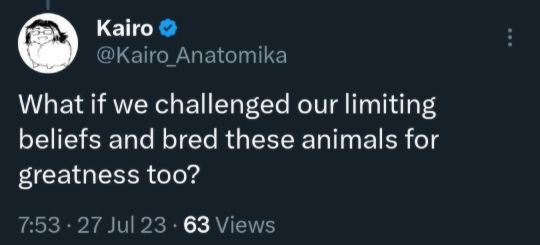



#animals#animal breeding#science gone mad#The food of the gods#chickens#horses#someone with really cheesy sensibilities needs to remake this movie
3 notes
·
View notes
Text

what does this person think AI is...
[Mod commentary: hUnDrEdS oF dOlPhInS]
#the only time I've ever heard of an animal dying from a complication with a.i.#was due to an adverse reaction to anesthesia#and dolphin don't have to be anesthesized for a.i.#it's entirely voluntary#in the wild#seaworld#animal welfare#animal breeding
16 notes
·
View notes
Text
Big Sky Season 3 Episode 11 Super Foxes
Tonya, I'm done playing nice. This is strike one. No more shutting Dono down. And if you had ruined Dono's super foxes speech, I might've just let Dono sledgehammer your fingers.
The Whitlows were fun. But the children didn't talk enough. I wanted to learn all their names. Gigi, she's special. Cassie is still my favorite of the females but I like Gigi.
Any season 4 talk, other than Dono has to stay of course?!
2 notes
·
View notes
Text
Y'all remember when they were breeding niggas like y'all breeding dogs? Just making your pets fuck, sell their babies for thousands each, then make em do it again. That's depressing as fuck. That ain't weird to y'all?
7 notes
·
View notes
Note
Why are so many animal rights advocators so against captive breeding? Like I would assume that with their philosophy, breeding opportunities should be made available to all animals, since the "survive to breed and breed to survive" drive is intrinsic to all living things and therefore should be a natural "right" so denying them that would be unethical - but it seems that most are of the opposite opinion? Why is breeding held in such a negative light in general if it's done normally? (normal as in not done for dysfunctional traits such as teacup dogs) Also wouldn't it be more practical to encourage captive breeding so that wild captures would be less necessary?
Oh boy... understanding the human mind is a little outside my area of expertise. But here are my thoughts.
The simple answer is that, short of killing every captive animal, preventing breeding is the most effective way to end captivity. Without it, all captive animals will be gone in a single generation. And extremist organizations like PETA extend this mindset to all animals, even domestics. It's one of the reaons they advocate for mandatory spay/neuter legislaton. The goal of eliminating captivity (whether out of genuine welfare concerns or, in PETA's case, radical animal liberation) supersedes the "natural right" of reproduction.
Of course, I don't think that's the thought process for most of the general public. There's just a lot of anthropomorphism surrounding animal breeding. We're very fortunate to live in a time where we have a choice about whether or not we have children, and many of us (myself included) have made the choice not to. And it's only natural for us to want to extend that to the animals we love. But the fact is, animals don't think that way. Like you said, reproduction is a natural drive, the most basic one there is after survival itself. That's the reason we have to spay and neuter in the first place -- we'd be inundated with puppies and kittens otherwise! And yet, a lot of the popular imagery around animal breeding is of a mother "forced" into pregnancy. That's especially common with artificial insemination, but it's used a lot even with natural breeding. It's incredibly poignant, and incredibly effective. And I find it's also popular to characterize animals as "pure and innocent," and the reproduction typically conflicts with that.
#sorry it's late and this is really rambling#but I'm trying to get caught up#animal breeding#answered asks#anonymous
27 notes
·
View notes
Text

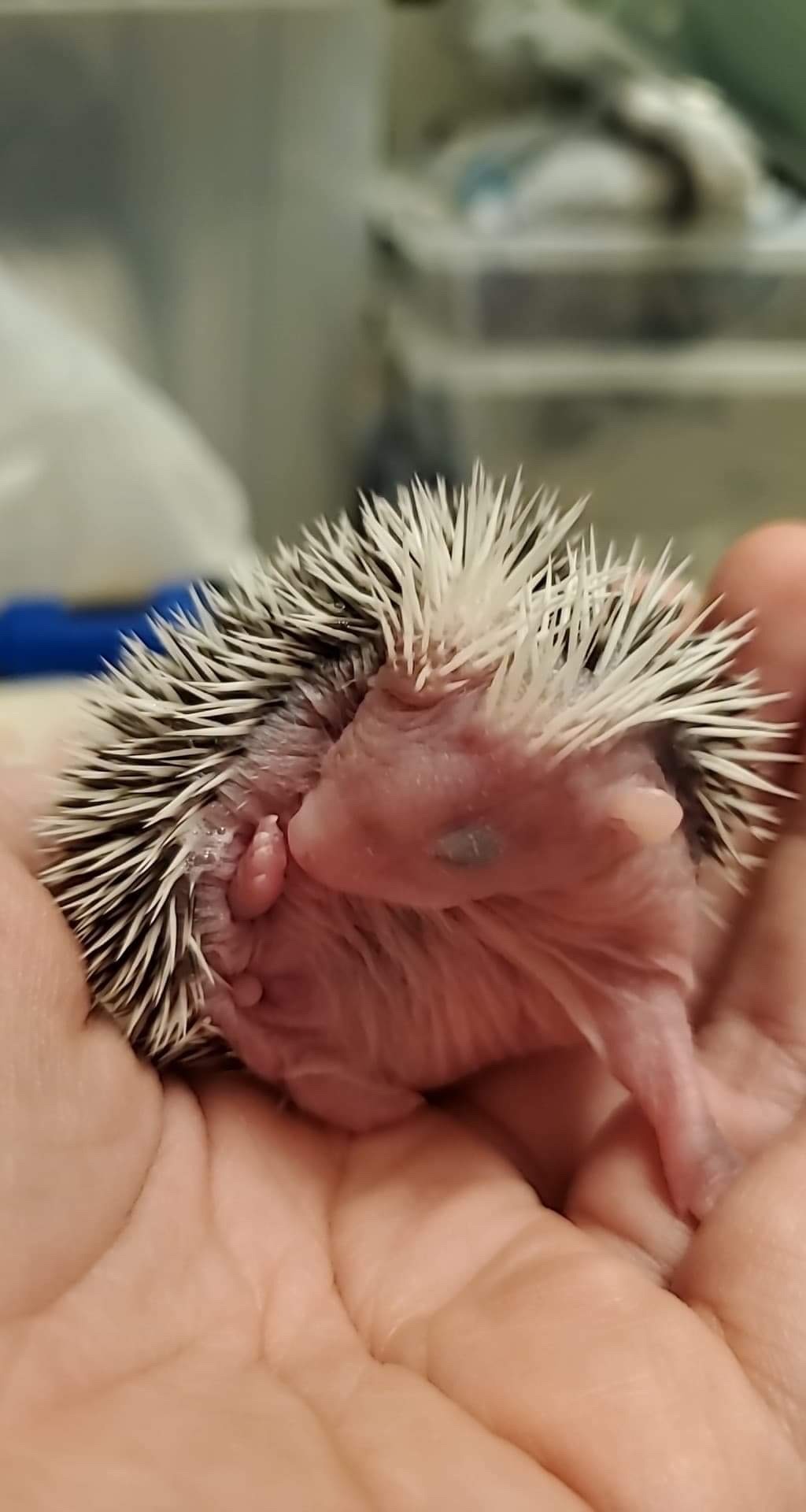
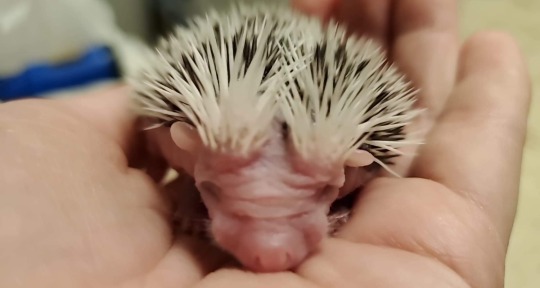
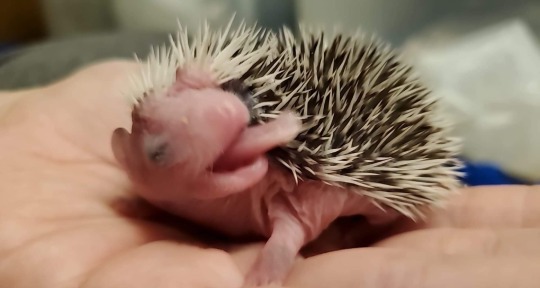

More pictures of my little Doodle Bug from the breeder.
Bonus is my favorite picture, that made me cry:
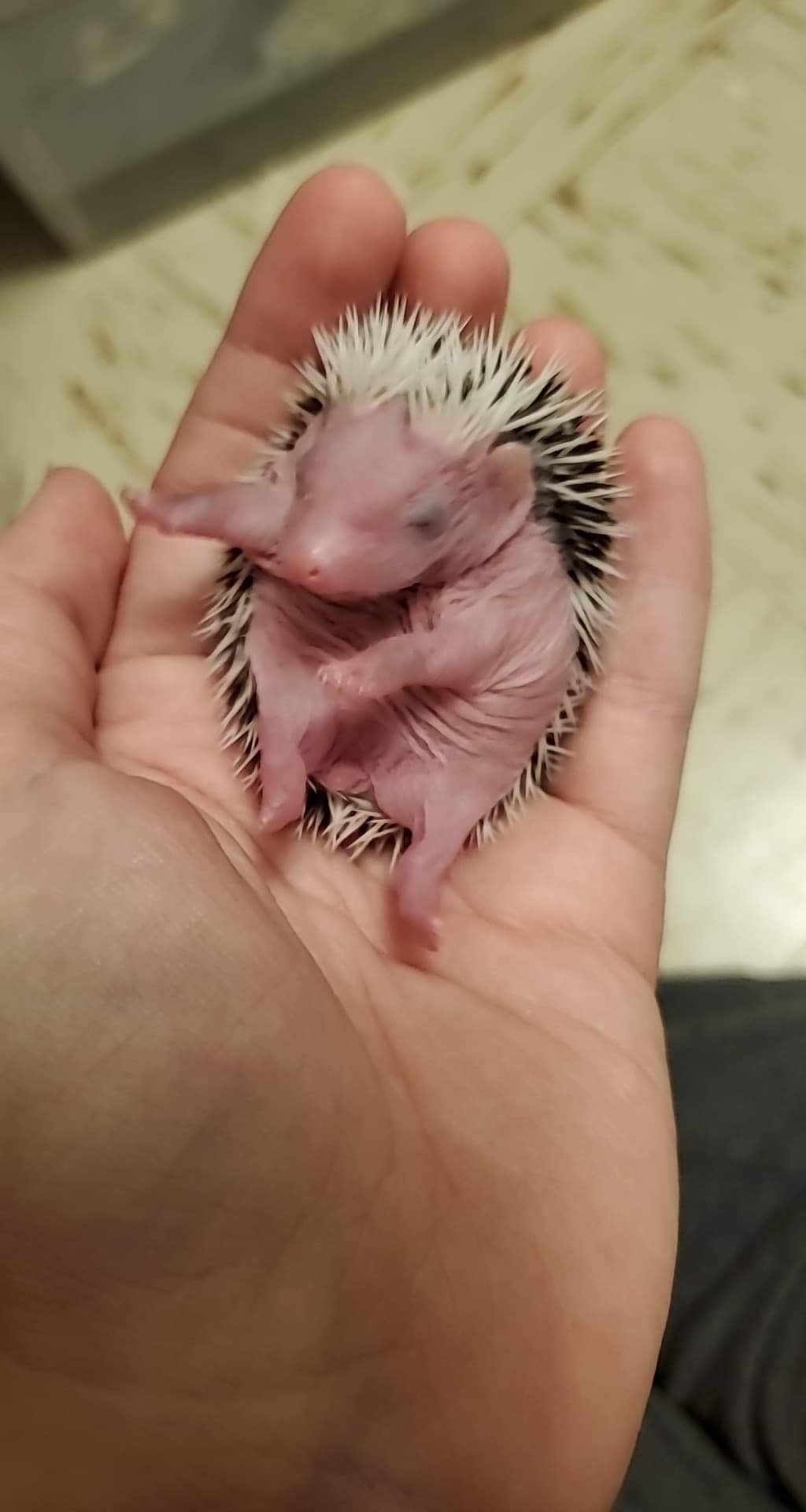
#hedgehogs#baby hedgehog#hedgehog#hoglet#baby animals#animal breeding#shes very cute#i cry thinking about her but that might be cuz im manic rn
3 notes
·
View notes
Text
Im fucking sobbing looking at the new black footed cat at Utah's Hogle zoo
Shes just a fucking baby

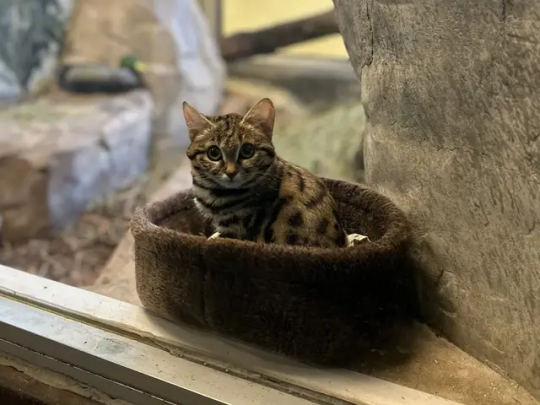
Baby with a 60% successful kill rate
#wrenfea.article#theres a video in the article#her name is gaia and shes 8 months#shes part of the AZA breeding program#i now have a reason to visit utah#leetle baby gorl#black footed cat#conservation news#conservation#zoos#animals#also the highest successful kill percentage for big cats is like. 25%#so 60% is fucking crazy
50K notes
·
View notes
Text
The Tortoises were quarantined, dewormed, analyzed for health, and microchip marked for identification, the tortoises were flown to their destination in the picturesque south of Isabela Island.
The giant Galápagos tortoises between the ages of 5 and 9 years were hatched and raised at the Breeding and Rearing Center on the island, where dedicated park rangers ensured their well-being and development from birth.
#rewilding#tortoise#galapagos#conservation#environmentalism#biology#animal breeding#wildlife conservation#ecology#environment
1 note
·
View note
Text

When I downloaded this game??? Pf + p = ??? Lol 🤣 bruh wth
Hhuhh???
1 note
·
View note
Text
Mike Tyson Just Took His Love for Pigeons to the Next Level - Men's Journal
https://www.mensjournal.com/news/mike-tyson-pigeons-poland
Poland, before the Soviet takeover was also renowned for their breeding of horses, especially Arabian horses.
0 notes